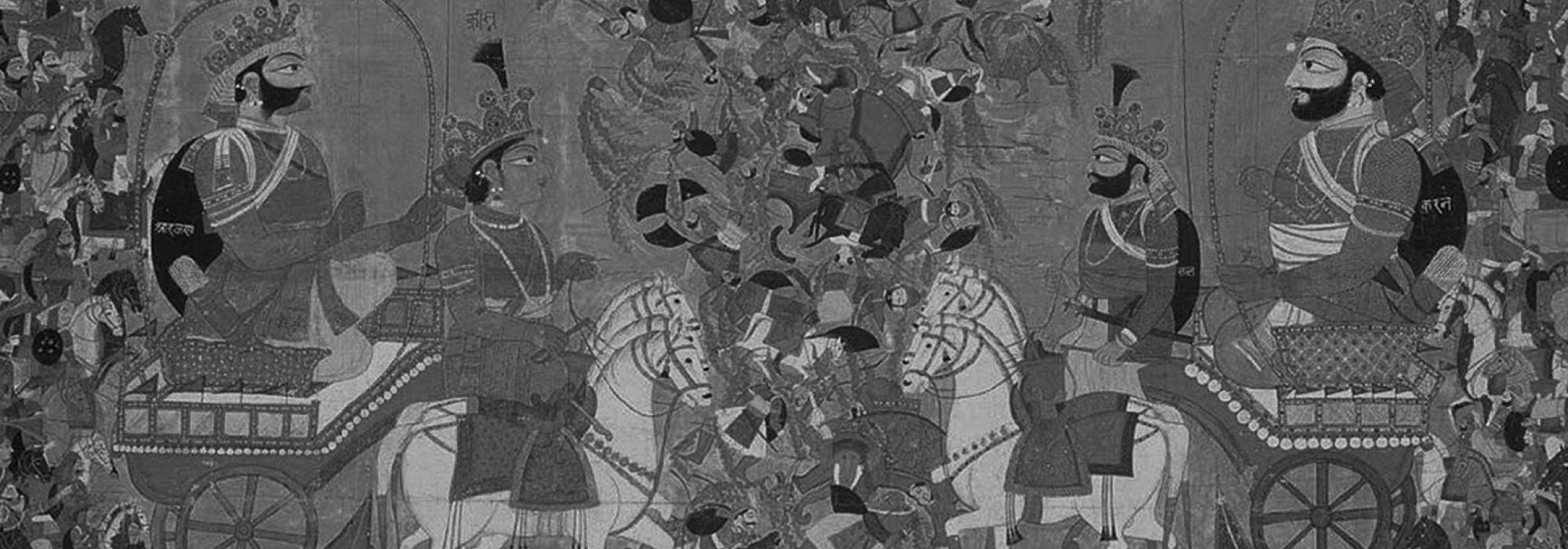Krishna led a simple life, possibly due to his humble beginnings. While much has been made of his expensive clothes by latter day scholars, the texts don’t give any indication of it. His clothes were yellow in color (पीताम्बर) – perhaps he wore that as a contrast to his dark skin. His ornaments were minimal; he adorned himself with a garland of wild flowers and a peacock feather on his diadem.
In the Gita, one of the traits of a bhakta (devotee) that Krishna mentions is ‘अनिकेतः,’ which literally means ‘homeless’ but actually refers to one who doesn’t care for a home; such a person doesn’t consider any place at home but feels at home everywhere (BG 12.19). What about Krishna himself? He could never call any place as home – he kept moving from place to place. He was in Gokula till his early teens and from then on, his existence was rather nomadic. For all the Yadavas, he made a great home in Dwaraka but he himself lived there only for a short while. And while he was a charioteer to Arjuna, he pretty much lived in the chariot (and finally when he stepped out, the entire chariot burned to ashes). In a sense, his living in the chariot represents his dynamism.
A few of the other traits of the bhakta that Krishna mentions are: सन्तुष्टः सततं योगी (12.14), अनपेक्षः (12.16), सन्तुष्टो येन केनचित् (12.19) – all of which are traits of contentment. Krishna was an epitome of self-satisfaction. When he went to meet the Pandavas in the Dvaitavana, he was appeased with a mere grain of rice from Draupadi’s अक्षयपात्र (The akshayapatra episode is not found in the Critical edition of the Mahabharata; however, it is found in the Gorakhpur edition).
In the Gita, Krishna says that he’s happy with any offering done with love – a leaf, a flower, a fruit or just water (BG 9.26). In the light of this statement, recall the episode of Krishna going to Hastinapura to conduct peace talks (MB 5.70-137 describes the peace mission in full). He refused to stay in the luxurious apartments of Duryodhana with its elaborate feasts and instead stayed at Vidura’s humble home, eating a simple meal. In fact, when Dhrtarashtra learnt of Krishna's impending visit, he told his court that they should welcome Krishna with all honors and give him many expensive gifts. Vidura then tells Dhrtarashtra that all these honors and gifts will not sway Krishna, for he has gone beyond such pettiness. “If at all you want to please him and win him over,” Vidura says, “then agree to peace and bring about a grand reconciliation between brothers; not by pushing for war.”
Krishna speaks of the austerity of body in the Gita, which includes simplicity, self-restraint, purity, benevolence, and respect for the supreme, for scholars, for teachers, and for the wise (BG 17.14). He followed this in his own life; never once thinking about amassing wealth for himself or seeking positions of power. He showed great respect to all beings around him and himself commanded great respect from all.














































